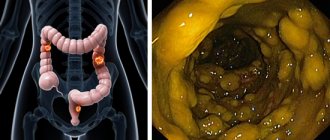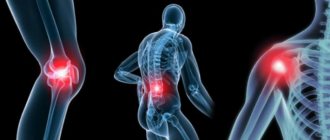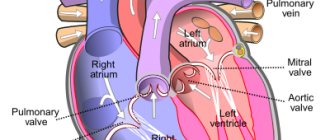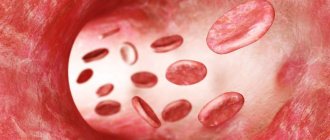What is galactose and why is its absorption impaired?
Everything we eat breaks down into small molecules during digestion: amino acids, fatty acids and monosaccharides (glucose, fructose). The body then uses them for energy or as building material. In order to break down a particular substance, enzymes are needed - usually protein molecules that speed up the chemical reaction. Without them, the reaction will proceed much slower or not at all. There are many enzymes, and each is responsible for its own group of substances or even for one substance.
Galactose is a sugar found in many foods. It is part of lactose, another sugar found in all dairy products, including breast milk.
Galactose is normally converted into glucose in the body using a number of enzymes. Due to mutations in the genes responsible for the synthesis of these enzymes, patients with galactosemia do not produce them, as a result of which an excess of galactose and its derivatives - metabolites - accumulate in the body.
Classic galactosemia (type I) is caused by a deficiency of the enzyme galactose-1-phosphate uridyl transferase (GALT).
Galactosemia in children (brief literature review and clinical case analysis)
Galactosemia is a hereditary autosomal recessive disorder of carbohydrate metabolism, in which an excess of galactose and its metabolites—galactose-1-phosphate and galactiol—accumulate in the body, which causes the clinical picture of the disease and the formation of delayed complications [1]. ICD 10 code - E 74.2 - Galactosemia (disorders of galactose metabolism; galactokinase deficiency is included). Galactosemia was first described by Mason HH, Turner ME in 1935 [2].
Epidemiology. The overall incidence of galactosemia in Europe ranges from 1:18,000 to 1:180,000 (average 1 case in 47,000), in the USA - from 1:30,000 to 1:191,000, in China 1:400,000, in Japan - 1:667,000. In a number of European countries, the frequency of classical galactosemia is 1:30,000–40,000, the clinical variant of galactosemia is 1:20,000, and the biochemical variant is 1:10,000 [3–6]. According to mass screening of newborns in Russia, the frequency of galactosemia is 1:16242, with most cases of the disease caused by mutations in the GJB2 and GALT gene [7].
Galactose plays an important role in the growing body. This monosaccharide is a significant source of energy for the cell and serves as a necessary plastic material for the formation of glycoproteins, glycolipids used by the body for the formation of cell membranes, nervous tissue, and the processes of myelination of neurons. Violation of galactose metabolism leads to disruption of the functioning of organs and body systems.
Etiology and pathogenesis. The disease is based on mutations in enzyme genes that block the conversion of galactose, which enters the body with food as lactose (milk sugar), into glucose. The development of hypergalactosemia is associated with a deficiency of one of the three enzymes involved in the metabolism of galactose: galactose-1-phosphate uridyl transferase (GALT), galactokinase (GAK) and uridine diphosphate (UDP) - galactose-4-epimirase (GALE). There are three known genes in which mutations can lead to the development of galactosemia - GALT with localization at 9p13.3, GALKI - 17q25.1, GALE - 1p36.11. The GALT enzyme catalyzes the conversion of galactose-1-phosphate and UDP-glucose to UDP-galactose and glucose-1-phosphate. Enzymatic reactions occur in the cytoplasm of the cell and are known as the Leloir pathway of galactose metabolism. When GALT enzyme activity is deficient, galactose-1-phosphate, galactose, and galactiol accumulate in red blood cells, liver cells, and other tissues. Galactiol, affecting osmotic processes, causes swelling and damage to various cells and tissues. For example, cataracts develop as a result of swelling of the lens fibers. The same process in brain cells promotes swelling of neurons with the formation of a pseudotumor process [8–10].
Classification. The classification of galactosemia [11] is based on the etiological principle. There are 3 types of galactosemia, depending on the patient’s defect in one of the 3 main enzymes involved in galactose metabolism:
A. classical,
b. clinical - galactosemia type 1, caused by deficiency of the GALT enzyme. This type of galactosemia includes
V. biochemical version of Duarte.
- less common - GALA deficiency (type 2 galactosemia);
- GALE or epimirase deficiency (type 3 galactosemia).
Diagnostics. To establish a diagnosis of the classic form or clinical variant of galactosemia, it is recommended [12, 13]:
1) measurement of the concentration of galactose-1-phosphate in erythrocytes and galactiol in the urine;
2) neurological examination and magnetic resonance imaging of the brain to exclude white matter abnormalities;
3) ophthalmological examination, including the use of a slit lamp to detect cataracts;
4) exclusion of hepatocellular pathology, which may be at risk of developing liver cirrhosis (at an early stage of the disease, hyperbilirubinemia is often detected, first with a predominance of accumulation of unconjugated, then conjugated bilirubin). In classical galactosemia: the level of galactose-1-phosphate in erythrocytes may be higher than 120 mg/dl (with a norm of less than 1 mg/dl), free galactose in the blood plasma is 10 mg/dl - 360 mg/dl, the activity of the GALT enzyme in erythrocytes is absent or barely perceptible in red blood cells and liver.
Neonatal screening. For the first time, mass screening for galactosemia using blood dried on filter paper was introduced by R. Guthrie in 1963 in the USA [14, 15]. In a number of countries in Europe, America and Asia, galactosemia is included in neonatal screening programs. In Russia, mass neonatal screening for galactosemia is carried out on the 4th day of life in full-term newborns and on the 7th day of life in premature infants. A blood sample is collected from the newborn's heel onto a filter blank. The introduction of a neonatal screening program makes it possible to detect galactosemia in almost 100% of children with this disease. Using the fluorescent method, the level of total galactose in dried blood spots is determined, which is the sum of the concentrations of galactose and galactose-1-phosphate. A result of less than 7.2 mg/dL is considered negative. When a total galactose level of 7.2 mg/dL or higher is detected, a confirmatory diagnosis of classical galactosemia is carried out, which includes determination of GALT enzyme activity and DNA diagnostics to identify the most common mutations in the GALT gene and the Duarte polymorphic variant, leading to a decrease in enzyme activity .
Why is there no screening for galactosemia in the Republic of Kazakhstan (RK)? Neonatal screening for hereditary diseases (phenylketonuria (PKU) and congenital hypothyroidism (CH)) is carried out in accordance with the order of the Minister of Health of the Republic of Kazakhstan dated September 9, 2010 No. 704 “On approval of the Rules for organizing screening.” According to the reporting data of the Republican Medical Genetic Consultation, the average coverage of neonatal screening for PKU and CH for 2015 and 9 months. 2021 amounted to 75%. Due to insufficient coverage of neonatal screening, the inclusion in the spectrum of such nosologies as galactosemia, cystic fibrosis and adrenogenital syndrome in the existing conditions is premature and unjustified for the Republic of Kazakhstan. When the average coverage of newborns with genetic screening reaches over 90%, this issue will be reconsidered. Galactosemia is not a common hereditary disease; its frequency in various populations ranges from 1:20,000 to 1:160,000 among newborns. For the above reasons, at the beginning of 2021, screening for galactosemia is not carried out in the Republic of Kazakhstan.
Clinical picture. Classic galactosemia is the most severe form of galactose metabolic disorder, causing life-threatening complications including developmental delay, hypoglycemia, hepatocellular damage, bleeding diathesis, and jaundice. Children with clinical galactosemia have some of the characteristics of classic galactosemia, including early development of cataracts, liver disease, mild mental fatigue, ataxia, and growth retardation. The biochemical variant is the most common form of galactosemia, which has no clinical manifestations.
Clinical case . Our literature review of galactosemia in children revealed infrequent descriptions of clinical cases of this disease [16, 17]. We present a clinical observation of this disease in a 3-year-old child. Boy B.A., born December 17, 2013, was admitted to Children's City Clinical Hospital No. 2 in Almaty on December 8, 2016, with complaints of severe itching and darkening of the skin, extreme anxiety and tearfulness. History of illness and life: Since birth, the child’s tests showed an increase in ALT, AST, and total bilirubin. Periodically, the bilirubin level returned to normal. From 5 months age, the mother began to notice an increase in the volume of the abdomen against the background of natural feeding, an increase in bilirubin was again noted, and the child was hospitalized in the Children's Infectious Diseases Hospital (DIH), where the diagnosis was made: IUI-CMV, primary active process, with liver damage, severe course. Conjugation jaundice. Treatment was carried out. After some time, itchy skin appeared on the palms of both sides, the child became restless and was transferred to artificial feeding. At the age of 1 year 9 months. In the hospital, corneal opacity and keratitis were diagnosed. At the age of 2 years, the diagnosis was made: D-deficient rickets, moderate severity, peak period. Violation of phosphorus-calcium metabolism. Hypocalcemic seizures. The itching of the skin periodically intensified. At the age of 2 years 4 months. received inpatient treatment at the Kazakh Research Institute of Eye Diseases for corneal-conjunctival xerosis and perforated corneal ulcer. A boy from the 2nd full-term pregnancy, 2 term births. Body weight at birth is 3900 g, height is 51 cm. Upon admission to the clinic, the child’s condition is serious, the severity of the condition is due to intoxication, skin and hepatolienal syndromes. Reduced nutrition. The child is lagging behind in physical (height - 81 cm, body weight - 11 kg, BMI - 16.77 kg/mⁿ) and neuropsychic development. The skin is dry, there are traces of scratching, itching of the skin is noted, with a moderate yellowish tint. The sclera is subicteric. Cloudiness of the cornea of the left eye. Visible mucous membranes are dry. The tongue is dry, covered with a white coating. The abdomen is enlarged in volume, the liver and spleen are of a dense elastic consistency, protruding from under the edge of the costal arch by 3 cm. The stool is regular, gray, greasy, and difficult to wash off. Urination is free, urine is dark in color. When carrying out additional research methods, the CBC revealed signs of 2nd degree anemia, leukocytosis up to 11*10ⁿ/l, acceleration of ESR up to 30 mm/h. A biochemical study revealed cholestasis syndrome: hyperbilirubinemia (67.3 mmol/l) with a predominance of the direct fraction of bilirubin (46.1 mmol/l), an increase in the level of alkaline phosphatase to 583.7 U/l and LDH to 441.2 U/l, syndrome cytolysis due to a greater increase in AST to 321.1 µkat/l. ELISA for markers of viral hepatitis is negative. ELISA for herpes simplex virus IgG-positive (OD cr-0.141, OD syv-1.789), cytomegalovirus IgG-positive (OD cr-0.181, OD syv-2.710). PCR for Cytomegalovirus infection is positive (8.3 geq/ml DNA copies). In OAM there is bacteriuria, leukocyturia. In the coprogram - steatorrhea, amilorrhea, (neutral fat+++, starch++). Abdominal ultrasound (AUS) confirmed the presence of hepatosplenomegaly. CT scan shows signs of lymphadenopathy of the mesenteric lymph nodes. On FEGDS dated December 26, 2016. Superficial gastroduodenitis. The child was examined by an ophthalmologist; retinal angiopathy of the 2nd degree, a corneal ulcer, and cataract of the left eye were detected. The infectious disease specialist, taking into account the results of the PCR analysis for cytomegalovirus, again recommended treatment in the DIB. Based on the anamnesis, clinical data and additional research methods, a council of doctors made a clinical diagnosis: Hereditary metabolic disease - galactosemia. Cytomegalovirus infection, generalized form, relapsing course. ROP CNS. BEN 2 degrees. Vitamin D deficiency rickets. In order to clarify the diagnosis, the consultation recommended:
- Determination of galactose in the blood, liver fibroscan, MRI of the brain + pituitary gland with contrast, coagulogram. Subsequently, to confirm the diagnosis of galactosemia, the child’s blood samples on a filter blank were sent to the Genomed laboratory of molecular pathology in Moscow with biochemical screening, TMS (tandem mass spectrometry) of amino acids and carbohydrates. The data obtained on December 29, 2016 (AS C16 - increased to 6.958 µmol/l (normal 0.16–4.2)) corresponded to the borderline result and indicated an increase in carnitines and the presence of ketosis, in connection with this it was recommended additional research. During confirmatory diagnostics, mutations in the GALT gene were identified.
Based on the presented clinical case, we can conclude that galactosemia is a rather difficult disease to diagnose, which, in the absence of timely correction, can lead to various complications, problems associated with delayed neuropsychic development, a decrease in the quality of life and, in the future, to disability. The introduction of neonatal screening will make it possible to timely transfer sick newborns to lactose-free feeding and avoid severe damage to the liver, central nervous system and eyes.
Literature:
- Federal clinical guidelines for the diagnosis and treatment of galactosemia // M. I. Yablonskaya, P. V. Novikov, T. E. Borovik - Moscow, 2013–20 p.
- Mason HH, Turner ME Chronic galactosemia: report of case with studies on carbohydrates // Am. J. Dis. Child. - 1935. - Vol. 50. - P. 359–374.
- Coss KP, Doran PP, Owoeye C. et al. Classical Galactosaemia in Ireland: incidence, complications and outcomes of treatment. J Inherit Metab Dis 2013; 36:21–27.
- Hereditary diseases. National leadership. Ed. N. P. Bochkova, E. K. Gintera, V. P. Puzyreva. M: GEOTAR-Media 2013; 936 pp.
- Bosh AM, Ijlst L., Oostheim W. et al. Identification of novel mutations in classical galactosemia. Hum Mutat 2005; 25:502.
- Cheung KL, Tang NL, Hsiao KJ, et al Classical galactosaemia in Chinese: A case report and review of disease incidence. // J. Paediatr. Child Health. - 1999. - Vol. 35(4). — P. 399–400.
- D. D. Abramov, M. V. Belousova, V. V. Kadochnikova. Frequency of carriage in the Russian population of mutations in the GJB2 and GALT genes associated with the development of sensorineural hearing loss and galactosemia // Bulletin of the Russian State Medical University. - 2021 No. 6 - p. 21–24.
- Sellick CA, Campbell RN Galactose metabolism in yeast-structure and regulation of the Leloir pathway enzymes and the genes encoding them. Int Rev Cell Mol Biol 2008; 269:11–150
- Holden HM, Rayment I., Thoden JB Structure and function of enzymes of the Leloir pathway for galactose metabolism. J Biol Chem 2003; 278:43885–43888
- S. Ya. Volgina et al. Galactosemia in children // Practical Medicine - 2014 No. 9 - p. 32–41.
- Berry GT Galactosemia: when is it a newborn screening emergency? // Mol. Genet. Metab. - 2012. - Vol. 106. - P. 7–11.
- S. Ya. Volgina, A. Yu. Asanov, A. A. Sokolov Modern aspects of diagnosis, treatment and observation of children with galactosemia type 1 // Russian Bulletin of Perinatology and Pediatrics. - 2015 - No. 5 - p. 179–187.
- Karadag N., Zenciroglu A., Eminoglu FT Literature review and outcome of classic galactosemia diagnosed in the neonatal period. Clin Lab 2013; 59:9–10:1139–1146.
- Kuzmicheva N.A., Kalinenkova S.G., Novikov P.V. Galactosemia: diagnosis and neonatal screening // Russian Bulletin of Perinatology. and pediatrics. - 2007 - No. 1 - p. 40–44.
- Guthrie R. Routine screening for inborn errors in the newborn: inhibition assay, instant bacteria and multiple tests. In: Proceedings of the international congress on scientific study of mental retardation. Copenhagen 1964; 495–499.
- Ozhegov A.M., Tarasova T.Yu., Petrova I.N., Stolovich M.N., Petrova S.A. Two cases of galactosemia in children // Pediatrics. - 2007 No. 6 p. 137–140.
- Eremina E. R., Nazarenko L. P. Clinical case of classical galactosemia // Siberian Medical Journal. — 2012 — No. 8.
How dangerous is the disease?
Excess galactose and its metabolites lead to tissue and organ damage. Symptoms appear in newborns in the first days of life because galactose from breast milk or formula enters the body and is not absorbed properly.
Which galactose metabolites are toxic in large quantities?
galactose-1-phosphate can accumulate in the patient’s body . In addition, in the absence of the necessary enzymes, the metabolism of galactose proceeds differently: it is converted into galactitol . Patients always experience an accumulation of galactitol in the blood and tissues and an increase in its excretion in the urine.
What tissues and organs are affected?
The accumulation of galactitol in the lens of the eye causes cataracts, a common symptom of galactosemia. In addition to visual impairment, infants with galactosemia during breastfeeding begin to have the following clinical manifestations:
- Symptoms of poisoning: nausea, vomiting, diarrhea, lethargy;
- Muscular hypotonia;
- Liver damage occurs, often accompanied by jaundice and hepatomegaly of the liver;
- Bleeding associated with hypocoagulation - a clotting disorder;
- Renal dysfunction.
The most severe and usually fatal manifestation of galactosemia is sepsis, which in 90% of cases develops due to Escherichia coli.
What happens if galactosemia is not treated?
Without timely diagnosis and treatment, about 75% of patients die in infancy: from sepsis, liver failure and other complications.
Children who survive without treatment develop chronic liver failure and severe damage to the nervous system, which leads to delayed psychomotor development. As a result, such children become disabled and their life expectancy is short.
Symptoms
The most important manifestations of pathology are intolerance to any milk that contains lactose, as well as the development of jaundice, cataracts (complex eye disease), hepatomegaly, cirrhosis, and exhaustion due to digestive disorders.
Symptoms of galactosemia in newborns develop due to a significant increase in the concentration of toxic substances in the blood and the appearance of an enzyme inhibition reaction to the activity of toxins. Enzymes involved in carbohydrate metabolism cannot reduce the density of galactose (as well as its metabolic products), so hypoglycemic syndrome develops, which has a negative effect on a number of internal organs.
Common signs of galactosemia. Types of pathology
Classic: caused by a deficiency of galactose-1-phosphate uridyl transferase (an enzyme that is involved in the conversion of galactose to glucose). If the amount of this enzyme is insufficient, galactose in the blood increases and glucose decreases. The liver does not fully participate in the metabolism of D-galactose (a component of milk). Symptoms of galactosemia in the classical type are a large body weight of a newborn child. Additionally, shortly after childbirth, after the baby drinks milk, he experiences loose stools and/or severe vomiting. Malnutrition (underweight, exhaustion) develops rapidly, and yellowing of the sclera of the eyes and skin appears. The liver enlarges, signs of cataracts develop (it is caused by the formation of galactite in the eye lens due to electrolyte imbalance and increased galactose). A hemolytic form of anemia (decomposition of red blood cells) often develops.
Galactokinase deficiency is manifested by only one symptom - the development of cataracts. To understand that it is galactosemia that is developing in a newborn child, biological fluids are examined. A blood test will show an increase in galactose and galactitol. Urine is saturated with reducing substances. Cataract symptoms develop very quickly, and galactosemia progresses if left untreated. With timely treatment, pathological processes in the eyes are reversible.
Epimerase deficiency has been poorly studied. Pathology of this type has almost no physical manifestations and is marked by biochemical changes detected by chance (an increase in monosaccharide is detected). This type of disease does not require emergency treatment.
Galactosemia in newborns produces symptoms in the first 3–10 days after birth. Milk enters the child’s body, and along with it substances that cannot be digested and absorbed. Gradually, toxins accumulate. The enzyme is metabolized in the liver, after which it enters the bloodstream.
What other types are there?
- Another variant of classic galactosemia (type I) is the Duarte form. This is a milder form; the activity of the GALT enzyme with this option can reach 25%, and sometimes higher. Severe life-threatening manifestations are usually not observed in newborns, but jaundice, liver enlargement and delayed physical development may occur.
- Type II. It is characterized by a mutation in the GALK1 gene, which encodes the enzyme galactokinase 1. Symptoms are not as severe as with classic galactosemia. Often the only manifestation of the disease is the development of cataracts.
- Type III. It is characterized by a mutation in the GALE gene, which encodes the enzyme epimerase. It can be mild or severe. The mild form is considered benign and is associated with enzyme deficiency only in circulating blood cells. In this case, there may be no clinical symptoms. In severe form, the enzyme is lacking in all tissues of the body. Symptoms are similar to classic galactosemia.
- Type IV. It is characterized by a mutation in the GALM gene, which encodes the enzyme galactose mutarotase. Of the 8 known affected children, none had gastrointestinal symptoms or severe liver dysfunction. Two had bilateral cataracts. All had normal growth and development.
Causes
With a disease such as galactosemia, the causes lie in hereditary predisposition. The following factors are also highlighted:
- in normal situations, milk sugar entering the body of a sick baby is broken down into glucose and galactose, and then converted into glucose under the action of an enzyme;
- the cause is gene mutations;
- if there is a lack of the necessary enzyme, metabolic products and galactose itself accumulate in the tissues and blood, producing a toxic effect;
- the liver, organs of vision, and central nervous system are affected.
- metabolic products, such as galaction, cause fluid to accumulate in the eye lens, which causes its clouding and the development of cataracts as a result.
How common is galactosemia?
Classic galactosemia occurs in 1 out of 30,000-60,000 thousand newborns. Type II occurs in less than 1 in 100,000 cases. Type III is very rare. Type IV has been reported in 8 people worldwide.
Lactose intolerance: what is it and what are the reasons?
How to diagnose
Neonatal screening allows you to diagnose the disease at a preclinical stage.
In the Russian Federation, mass screening is carried out in the first week of life: a blood test is done. The level of total galactose (the sum of the concentrations of galactose and galactose-1-phosphate) in the blood serum should not exceed 7.2 mg/dL. If the indicators are higher, confirmatory diagnostics are performed:
- determination of GALT enzyme activity;
- DNA research. DNA research consists of two stages: 1) screening for the most common mutations in the GALT gene and the Duarte variant; 2) complete gene analysis to identify rarer mutations. If mutations in the GALT gene are not detected, then a search for mutations in the GALE and GALK1 genes is carried out.
Diagnostics
Diagnosis of galactosemia:
- general inspection. Yellowing of the skin and mucous membranes is observed. The abdomen enlarges as a lot of fluid accumulates;
- clinical signs (diarrhea, vomiting, decreased muscle tone, developmental delay);
- laboratory data (general blood count, blood biochemistry, determination of glucose and galactose levels, increased levels of liver enzymes, bilirubin, decreased protein levels);
- urine test (high galactose, high protein and sugar);
- additional methods (ultrasound, liver biopsy, diagnostics of the eye lens);
- Consultation with a medical geneticist may be necessary.
Treatment of galactosemia
Galactosemia is a diagnosis that stays with a person forever, like eye or skin color.
Diet therapy is the main method of treating the symptoms of galactosemia.
It is necessary to avoid all products containing lactose and galactose for life:
- any type of milk, including infant formula;
- all dairy and milk-containing products (even those with low lactose content).
As well as a number of products of plant and animal origin that contain galactosides and nucleoproteins - substances that can be metabolized to form galactose. These are products such as:
- legumes, including soybeans (except soy protein isolate);
- spinach;
- cocoa, chocolate;
- nuts;
- meat by-products (liver, kidneys, brains, etc.)
In the first year of life, children with galactosemia are given mixtures based on soy protein isolate - they do not contain plant galactosides. If you are allergic to soy protein, mixtures based on casein hydrolysates are prescribed. Sometimes both mixtures are used alternately.
The introduction of a diet leads to relief of clinical symptoms, including cataracts. But despite this, sick children remain at risk of developing complications: delayed physical development, speech delay, osteoporosis. Girls are at increased risk of ovarian failure.
Children with galactosemia need to be examined more carefully: regularly check the state of the nervous system, vision, physical development and blood counts, and in girls - the level of sexual development upon reaching puberty.
Galactosemia
- Definition
- Incidence of galactosemia and epidemiology
- How is classical galactosemia type I inherited?
- Pathogenesis
- Clinical manifestations of classical galactosemia
- Diagnosis of galactosemia
- Treatment methods
- Prognosis of galactosemia
- Literature
Definition
Galactosemia - this term refers to a whole group of hereditary diseases associated with a deficiency of enzymes necessary for the normal metabolism of galactose. Classic galactosemia (the most malignant) type I is galactose-1-phosphate uridyl transferase deficiency.
The term galactosemia comes from the Greek words gala, galaktos, which means milk, and haima, which translates to blood. This pathology was first described in 1908 by A. Reuss.
Incidence of galactosemia and epidemiology.
The incidence of the disease ranges from 1:187,000 to 1:18,000. In Europe, the average frequency is 1:47,000, and in Japan 1:667,000. The frequency of gene carriers in the population is 1:300. In the USA these figures drop to 1:40-60,000, in the UK 1:70,000, in Ireland 1:30,000.
Unfortunately, during the neonatal period, galactosemia has a high mortality rate, but with timely diagnosis and diet, such patients survive to adulthood.
How is classical galactosemia type I inherited?
In order to understand exactly how galactosemia is transmitted, and whether other children in the family will suffer from this disease, it is necessary to understand how exactly the process of inheriting galactosemia occurs.
Galactosemia has an autosomal recessive mode of inheritance. This means that if someone in the family has only one “sick” gene, then such a person is a carrier, but at the same time he remains healthy. For galactosemia to appear, a “sick” gene is required on both chromosomes at once. To better understand the inheritance process, let's compile and consider Table 1:
Table 1: variants of inheritance of galactosemia.
To simplify the diagram, we placed only one chromosome with a “diseased” gene, instead of 23. The mutant gene is marked with a circle. As you can see, if there is only one mutant gene, then the person does not get sick, but passes this gene to his child. If there are two parents, each of whom carries a mutant gene, then the child can receive both “sick” chromosomes, that is, get galactosemia.
As can be seen from the table, the probability of inheriting both mutant chromosomes at once is only 25%; the remaining children in the family can either be healthy or be carriers of the mutant gene. And this probability - 25% - does not change depending on the number of children in the family. Each subsequent child has a 25% chance of receiving both mutant genes.
The gene encoding galactose-1-phosphate uridyl transferase is located on chromosome 9 at the p13 locus. There is a more favorable variant of the course of galactosemia - the Duarte variant. Here the amount of galactose-1-phosphate uridyltransferase also decreases, but its level is only two times lower than normal, and accordingly, the clinical picture is milder and the course is more favorable.
Pathogenesis.
Lactose is the main carbohydrate in milk; it is a disaccharide that breaks down into glucose and galactose. Normally, in the digestive tract, lactose is hydrolyzed by intestinal lactase, and absorbed galactose is converted into glucose in the liver.
Let's look at the pathogenesis of the development of the clinic in stages.
- Galactose is absorbed in the intestine and enters the liver, where it must be converted into glucose by galactokinase to form galactose-1-phosphate. In galactosemia, this process is disrupted, resulting in a sharp increase in the level of galactose-1-phosphate in red blood cells and the liver.
- As a result, oxygen transport is disrupted, its amount decreases by 20-30 times. Tissue respiration is disrupted. Blood sugar levels decrease. All these pathogenetic mechanisms lead to impaired growth and development of the child.
- With the help of red blood cells, galactose-1-phosphate is distributed throughout the body, deposited in the liver, kidneys, lens, tongue, brain, heart, causing corresponding damaging effects. Galactitol is deposited in the lens, which causes the development of cataracts.
- Women develop hypergonadotropic hypogonadism, that is, the functioning of the ovaries is disrupted. The pathogenesis of this condition is unknown.
- Unabsorbed (not absorbed) monosaccharides remain in the intestine, which causes damage to the intestinal mucosa, disrupting its motility. As a result, diarrhea and other intestinal disorders develop.
- Increased motility leads to impaired absorption of other substances in the intestines: vitamins, proteins, fats. This causes severe dehydration.
Clinical manifestations of classical galactosemia.
- It appears in the first few days of a baby’s life.
- !Develops both when feeding with breast milk and when feeding with regular milk formulas during artificial feeding!
- Persistent jaundice appears with liver enlargement.
- Large nodular cirrhosis of the liver develops
- Appetite decreases sharply.
- Drowsiness.
- The lens becomes cloudy.
- Vomiting develops.
- Diarrhea.
- Flatulence.
- Toxicosis is increasing.
- There may be twitching of the eyeballs and convulsions.
- Dehydration develops.
- Hypotrophy, retardation in physical development.
- Liver failure gradually progresses and ascites develops.
- Splenomegaly is an enlarged spleen.
- Septicemia increases, most often Escherichia coli.
- Hemolytic anemia.
- Osteomalacia.
- Delayed psychomotor development.
- Blood clotting slows down, which is manifested by frequent hemorrhages on the skin and mucous membranes.
- From 4-7 weeks, cataracts can be detected.
If galactosemia is not detected in a timely manner, the disease enters the terminal phase:
- Cachexia is exhaustion.
- Severe liver failure.
- Layering of secondary infections.
- Acidosis.
- Coma.
With the development of the Duarte variant, all symptoms are less pronounced. This syndrome manifests itself in a significant number of different phenotypes: only one cataract, intracranial hypertension, deafness can develop….
!It is worth knowing that if a pregnant woman has galactokinase deficiency, this can cause the development of cataracts even in the fetus!
Diagnosis of galactosemia
The first suspicions may arise among parents when, in response to feeding, the newborn begins to develop vomiting, diarrhea, does not gain weight and refuses to eat. We remind you once again that galactosemia develops not only during breastfeeding, but also during artificial feeding.
However, in recent years, doctors around the world are not waiting for the development of the first symptoms, but are screening all newborns for galactosemia. During this examination, a decrease in galactose-1-phosphate uridyl transferase is found in the newborn. A positive screening result is an indication for further examination.
Young patients are prescribed consultations with a geneticist, neurologist, ophthalmologist, nutritionist and speech therapist. Regular examination by an endocrinologist is mandatory.
Additionally, urine tests are carried out, in which reducing substances other than glucose appear. Sugar that is not detected by a specific glucose oxidase reaction is determined in urine. This sugar can be detected using chromatographic methods.
A blood test is also taken to determine the absence of galactokinase in red blood cells.
Recently, examination methods have emerged that make it possible to diagnose galactosemia prenatally by examining the corresponding enzymes in cells. To do this, amniocentesis is performed and the amniotic fluid is examined, in which galactitol is determined.
Treatment methods
Diet therapy is the main method of treatment from the first days of a baby’s life. Lactose-free formulas are recommended for these babies. If you immediately identify galactosemia, you can avoid the development of cataracts, cirrhosis and mental retardation.
Pregnant women at high risk of galactosemia should also limit their intake of dairy products.
The main component of lactose-free artificial nutrition is casein protein. The mixture contains corn oil and milk fat in a ratio of 25:75, respectively. Sucrose, dextrin - maltose, malt extract, starch, dietary , vitamins, microelements. The taste of this powder is no different from other dry milk mixtures .
Drug treatment.
In advanced cases, terminal conditions or severe cases, plasma and blood transfusions are necessary. Prescribe potassium orotate, cocarboxylase, ATP.
In any case, if the pediatrician suspects galactosemia, he will switch the baby to a lactose-free formula. It is recommended to maintain this diet until a diagnosis is made or excluded.
Prognosis of galactosemia
If the diagnosis is confirmed, then the baby continues to receive a low-lactose mixture with malt extract for up to 2 months, from two to six months he is transferred to a low-lactose mixture with flour, and from six months the child begins to receive low-lactose milk .
Diet therapy should be followed for three years, and all this time the child is under the supervision of specialists. At three years of age, children are again tested for galactose in their blood to adjust treatment. Often, as a child grows up, the partial functioning of some enzymes appears.
If galactosemia is detected in a timely manner and strict dietary therapy is followed, the disease does not progress. However, in acute cases, sudden death can occur. In severe cases, with late detection of the disease, consequences develop: dementia, cataracts, liver and kidney failure.
Literature
- Small medical encyclopedia. — M.: Medical encyclopedia. 1991–96
- First aid. - M.: Great Russian Encyclopedia. 1994
- Encyclopedic Dictionary of Medical Terms. - M.: Soviet Encyclopedia. — 1982—1984
- TPHarrison. Principles of internal medicine. Translation by Doctor of Medical Sciences A. V. Suchkova, Ph.D. N. N. Zavadenko, Ph.D. D. G. Katkovsky
- Guide to Pediatrics, ed. R.E. Berman and V.K. Vaughan, trans. from English, book. 2, p. 387, M., 1988.
- Con.R.M. and Roth.K.S. Early diagnosis of metabolic diseases, Persian from English, M., 1986.
Return to the section “Galactosemia”
| Tweet |
Genetic screening
It is best if you are planning children to check in advance whether you are an asymptomatic carrier of the disease.
Based on the results of the Genetic Atlas test, you can obtain not only data on the risk of developing certain diseases and carrier status of hereditary diseases, but also metabolic characteristics and a predisposition to intolerance to certain nutrients. Including finding out if you have any defects in galactose-related genes.








